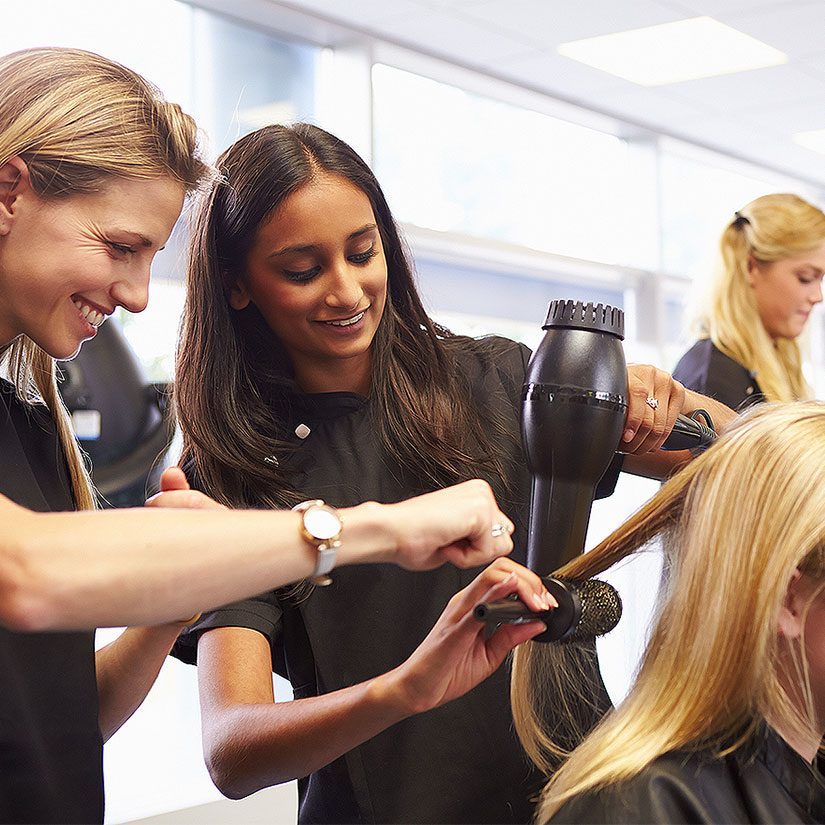In any field, a grasp of historical context can be instrumental to success. While you might not need a deep dive into the past, a basic understanding can provide valuable insights and inspiration. This is certainly the case in the world of cosmetology, where trends and techniques have rich histories behind them. Let’s delve into the evolution of hair highlights and lowlights, essential concepts in the realm of hair coloring that continue to influence modern styles. Understanding how these techniques have developed over time can empower and inspire stylists in their craft.
Highlights and lowlights have evolved from ancient Greek sun-activated mixtures to modern foiling and balayage techniques. Early 1900s highlight caps introduced peroxide dyes, while the 1980s popularized foils and freestyle methods. Today, these coloring techniques are staples in cosmetology, offering endless options for dimension and style.
What Are Highlights and Lowlights?
Highlights and lowlights are techniques used to add depth and dimension to a person’s hair by altering specific strands rather than applying one uniform color. Highlights typically involve lightening sections of hair to create a sun-kissed or brighter effect, while lowlights introduce darker shades, adding richness and weight to the overall look. The intricacies of these processes, from the choice of color to the placement and saturation, play a crucial role in achieving the desired end result.
How Does Someone Achieve Highlights and Lowlights?
Achieving the perfect balance of highlights and lowlights is an art form, and there are several methods through which stylists can bring this vision to life. Currently, in the field of modern cosmetology, the following four techniques are widely used:
- Foil
- Hair painting/balayage
- Frosting
- Chunking
Foil is the traditional method, where hair is separated into multiple sections, hair color is painted onto hair, which is then wrapped in a foil and left to set.
Hair painting is a more freestyle method, where the colorist paints the color directly onto the hair more freely than the technique used in foiling.
Frosting tends to emphasize the contrast between the light and the dark, as though the light is “frozen” onto the dark.
Chunking, sometimes called “chunky highlights,” creates large sections of prominent color on your hair, with the maximum contrast between light and dark.
Each method has its unique appeal and is chosen based on the desired final effect, with stylists carefully considering the individual characteristics of each client’s hair to achieve optimal results.
What Types of Products Are Used?
It all depends on the result you want. Typically, there are four different dye options used, from most permanent to least permanent:
- Temporary
- Semi-permanent
- Demi-permanent
- Permanent
Highlights and Lowlights in Ancient Times
For centuries, people have used different techniques and formulas to color their hair.. As early as 4 B.C., the ancient Greeks were possibly trying to add highlights to their hair. A person would apply an ointment made of olive oil, pollen, and gold flakes to their hair, then sit in the sun for hours. This wasn’t very effective, but it was a technique used for many years.
By around 1400, people were starting to experiment with chemicals, and the same went for hair coloring. Someone would mix alum, honey, lemons, and sulfur together. This mixture was applied to hair with the use of a hat, to prevent product from sliding down hair. The sun, again, was used in this process to initiate the color transfer. Due to the addition of the sulfur and lemons, this was a bit more successful, but truly successful highlights and lowlights wouldn’t be invented for many centuries to come.
Highlights and Lowlights in Modern Times
In the early 1900s, modern highlight caps first got their use. These highlight caps would fit on a person’s head but had holes all over the cap. The cosmetologist would pull strands of hair through the caps, then dye them to prevent bleeding highlights. This is where hydrogen peroxide first comes into play as a method of hair dye, and it’s surprisingly effective.
The Great Depression and World War II both contributed to a downturn in hairstyling services, but around the 1960s, the hair cap returned. Though it was no longer “just a fad,” it created a very monochromatic, unnatural highlight style. However, in the 1980s, highlights truly exploded in popularity, and foils were introduced to allow people to place highlights anywhere they wanted. All methods of highlighting and lowlighting gained popularity during this time.
Conclusion
As you can see, the world of cosmetology is always growing and changing. Cosmetologists have certainly come a long way from mixing olive oil, pollen, and gold together and hoping it will do something to a person’s hair color. It’s a magical experience seeing the cosmetology world grow and change, and with the cosmetology program from Tricoci University of Beauty Culture, you get to see that happen in real-time. Sign up to get more information today and learn about how you can experience cosmetology more excitingly.





